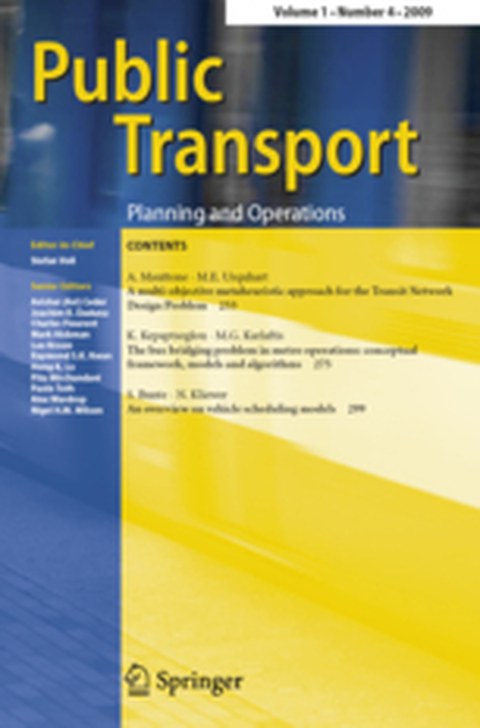Sep 06, 2016
Fachartikel angenommen zur Veröffentlichung in Public Transport
In konventionellen Ruf-Bus-Systemen werden Fahrgäste von einem Fahrzeug am spezifizierten Zustiegsort aufgenommen und bis zum vereinbarten Zielort gefahren. In diesem Fachaufsatz wird untersucht, wie Umsteigevorgänge durch zeitliche Vorgaben in Ruf-Bus-Systeme integriert werden können und welche Vorgaben sinnvoll sind.
Der Original-Abstract lautet: In a conventional dial-a-ride-system a passenger is moved by one vehicle between the specified pickup and the corresponding drop-off location. In a dial-a-ride-system with transfers, it is possible (or even necessary) that passengers change the vehicle once or several times during their ride from the specified pickup to the specified drop-off location. Transfer Scheduling Constraints (TSC) are imposed in order to ensure that the comfort of the transfer remains on an acceptable level by avoiding too short or too long vehicle changing times but also for limiting the total riding time between the initial pickup location to the final destination. In this contribution, we investigate the dial-a-ride-problem with transfer scheduling constraints (DARP-TSC) as an example for routing scenarios with TSC. We provide initial insights into the consequences of introducing TSCs using computational experiments with a memetic algorithm metaheuristic. This search algorithm is enhanced by a schedule building procedure that postpones waiting times at selected locations if necessary in order to meet the TSCs.
Der Aufsatz ist angenommen zur Veröffentlichung im Journal "Public Transport" (Springer Verlag, http://link.springer.com/journal/12469).

